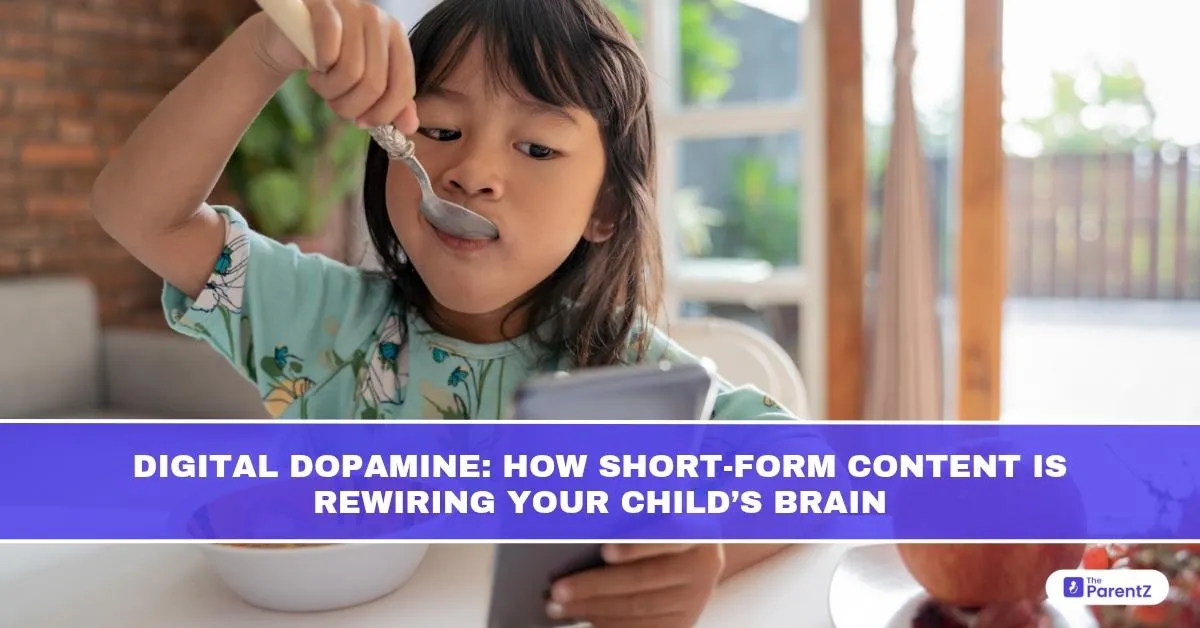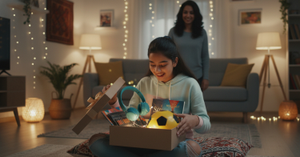Always Scrolling, Never Still
You’ve seen it, children glued to screens, swiping rapidly through 10-second videos, laughing one second, zoning out the next. Reels, Shorts, and quick clips flood their minds with dopamine hits, keeping them scrolling endlessly.
But while this content is fast and fun, it may also be rewiring your child’s brain in ways we never anticipated.
New studies, including those referenced on PubMed and by pediatric experts from Mayo Clinic, warn that frequent exposure to short-form content is changing how young brains learn, rest, and even feel pleasure. And this isn’t just about screen time, it’s about what kind of screen time.
Let’s understand what’s happening inside your child’s brain and how you can help them enjoy tech without losing focus or joy.
What Is Short-Form Content?
Short-form content refers to quick, snackable videos usually under 60 seconds, designed to grab attention instantly. Examples include:
- Instagram Reels
- YouTube Shorts
- TikTok clips
- Snapchat Spotlight videos
These are engineered for maximum engagement, fast cuts, trending sounds, eye-catching visuals, and endless scrolling. They’re made to hook.
But the brain of a growing child isn’t just entertained, it’s being trained.
Dopamine: The Brain’s Reward Currency
At the heart of this rewiring is dopamine, a brain chemical associated with pleasure, motivation, and learning. When your child watches something exciting or funny, their brain releases dopamine, a natural reward.
Short-form videos exploit this loop. With every swipe, the brain gets a mini dopamine hit. Over time, the brain begins to crave faster, louder, shorter content to feel the same level of pleasure.
It’s not unlike how sugar conditions the tongue to want more sweetness; short-form content conditions the brain to want constant novelty.
How It Affects a Child’s Brain
According to developmental neurologists and findings published in the Journal of Pediatrics and Neuroscience & Biobehavioral Reviews, frequent use of short-form content can affect children in five major ways:
1. Reduced Attention Span
The constant switching of content trains the brain to prefer distraction over sustained focus. Children who watch too much of it may find it harder to:
- Concentrate during class
- Sit through books or homework
- Engage in slow, creative play
Their minds grow accustomed to fast-paced stimulation, making regular activities feel “boring.”
2. Overstimulation and Poor Sleep
High dopamine surges, especially near bedtime, can lead to restless sleep, irritability, and even daytime fatigue. The blue light from screens also interferes with melatonin, the hormone responsible for sleep.
3. Delayed Gratification Becomes Harder
Because short videos give instant rewards, children may lose patience with tasks that require effort. They’re more likely to say, “I’m bored” or give up quickly when faced with challenges.
This can affect academic motivation and emotional resilience.
4. Mood Swings and Low Tolerance
The crash after constant stimulation can lead to mood swings, anxiety, or even symptoms similar to withdrawal. Some children become restless or angry when denied access.
5. Reduced Creativity and Imagination
Constantly being fed entertainment leaves little room for daydreaming or self-directed play, two key drivers of imagination and original thinking.
“It’s Harmless Fun”—Is It Really?
Many parents wonder: Isn’t this just the new way of growing up? Didn’t we watch cartoons too?
The difference is in the speed, volume, and accessibility. Today’s short-form videos are:
- Endless: There’s no natural stopping point
- Algorithm-driven: They’re designed to get more addictive over time
- Available anytime: Phones are often within reach, day and night
In earlier generations, entertainment had natural pauses (TV shows ended). Now, the brain is flooded nonstop.
Signs to Watch For
You may not notice a problem at first. But over time, look for these signs that your child might be overexposed:
- Difficulty focusing on schoolwork or conversations
- Constant need for screen time to feel “okay”
- Frustration during quiet or unstructured moments
- Lack of interest in books, toys, or outdoor play
- Trouble sleeping or frequent mood swings
What You Can Do: Creating Digital Balance
You don’t have to ban everything. The key is mindful use, just like healthy eating. Here’s how you can support your child:
1. Model Screen Discipline
Children watch how you use your phone. If you’re constantly scrolling, they’ll mirror you. Set screen-free times for the whole family, like during meals or before bed.
2. Set Clear Boundaries
Limit screen time, especially on platforms with short-form content. The American Academy of Pediatrics recommends:
- For kids under 2: Avoid except for video calling
- Ages 2–5: No more than 1 hour per day, co-viewed
- Older kids: Set age-appropriate limits and encourage balance
Use built-in timers on apps like YouTube or Instagram to reinforce limits gently.
3. Delay First Exposure
Avoid giving access to Instagram Reels, TikTok, or Shorts before age 11–12. The later they start, the better their brain can handle the stimulation.
4. Encourage Long-Form Content
Introduce them to documentaries, slow-paced stories, or nature shows. These build attention spans and offer meaningful engagement.
5. Fill Their Time Differently
Create moments of boredom; this is where creativity lives. Offer puzzles, Legos, drawing kits, or outdoor play. Children don’t always need to be entertained; they need time to think and imagine.
6. Have Conversations
Ask your child what they like about the videos. Talk about how certain videos make them feel. Teach them how algorithms work, so they understand they’re being “trained” to scroll.
Final Words: Don’t Fear Tech, Guide It
Technology isn’t the enemy; unchecked use is. Short-form content isn’t evil, but it’s powerful. And like any powerful tool, it needs to be used wisely, especially with young, developing brains.
As a parent, you don’t have to be perfect. But staying aware, involved, and gently guiding your child toward balance can make all the difference. Their attention span, creativity, emotional health, and even long-term joy depend on what habits we help them build today.
Let’s raise not just tech-savvy kids but deeply present, curious, and grounded ones.








Be the first one to comment on this story.